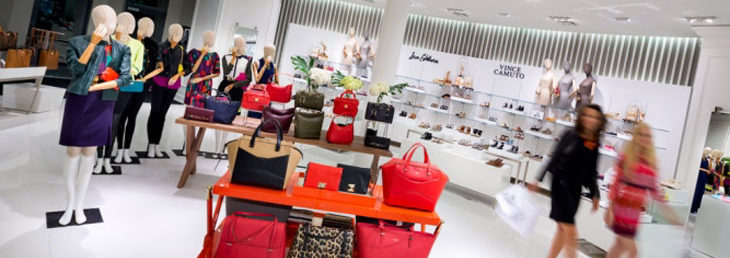Lord & Taylor will sell on Walmart.com: Unthinkable partnerships for winning the future of retail

Despite signs of economic recovery in many other markets, hundreds of malls and shops are shuttering. The last two years have been disastrous for brick & mortar retail. This crisis is being especially notorious in US, from rural strip-malls to Manhattan’s avenues, perhaps setting a global trend. There have been nine retail bankruptcies in 2017 in this country, as many as all of 2016. Iconic brands in this area such as J.C. Penney, RadioShack, Macy’s, and Sears have each announced more than 100 store closures.
Several reasons explain the brick-and-mortar retail meltdown. Certainly, the real estate bubble during years previous to the financial crisis supposed an over-supply of malls and too many new shops from different brands. Moreover, some consumer trends indicate a certain shift on spending behavior from ownership to experiences. But the main reason is probably that people are simply buying more stuff online than they used to. Consumers are gradually getting used to replace their local mall by their living room couch to do their shopping.
Getting right online commerce
Some online retailers have learnt how to overcome early barriers for many costumers other than geeks and millennials to buy from their desktops or Smartphones. Easy return policies, competitive prices including free delivery and better interfaces have made online shopping easier and risk-free, which has had the most surprising effect on the fashion and apparel market. Once considered by experts a difficult kind of products for selling online as shoppers would prefer to try on and feel clothing in stores, apparel and accessories are now about to become the largest e-commerce category, overtaking computers and consumer electronics as a percentage of total online sales.
For all brands, but even more so for those in the fashion and apparel sector, becoming successful in online commerce takes being able to properly respond to special dynamics different from those that were needed to success in main streets and malls. This Know How, being a key competitive factor, is far from easy to obtain or just copy. Those dynamics imply a “work in progress” as consumers and markets evolve and all sorts of tests and pivoting take place in a constant flow of new initiatives and propositions based in a wide variety of factors, from the implementation of new technologies to innovative business models or major operational reorganizations (for instance, to fulfill the promise of omnichannel).
Unthinkable partnerships as “a sign of the times”
This is why collaboration too should be considered for thriving or even surviving on this new e-commerce paradigm. Getting right online commerce markets is becoming yet another source of what previously could be considered unthinkable partnerships.
Take, for instance, the recent announcement of Wal-Mart launching a Lord & Taylor flagship store on its website in spring 2018. Nesting an old well known luxury brand like Lord & Taylor on the e-commerce platform of a populist brand with discount roots like Walmart seems contrary to all branding insights. It could even be judged as a sort of “retail surrender” by the brand most loyalists customers. For those consumers not close to the brand, Lord & Taylor is viewed as a struggling, old-fashioned department store. Both companies differ in target audiences, identity and price tag.
But the partnership has been announced by its promoters as “a sign of the times”. What do they mean? Perhaps that branding and shopping experience work in a totally different way offline that online. Lord & Taylor plans to keep running its own website after the launch, but for the company this collaboration with Walmart is part of the re-imagination process of what their brand tradition might look like for future generations, and a way for them to reach a wider base of new customers. On the other hand, if as some retail experts consider that “in the future, user experience will be the new brand”, then it makes sense to partner with somebody who coming from a history of big success in brick & mortar retail is already making a big effort on trying to keep being a main player on the online realm by mastering this user experience, a goal perhaps too difficult for Lord & Tailor to obtain by their own.
Online shopping giant Amazon thrived by first doing very well in media and entertainment categories, like books and music, and later adding all kind of products categories and brands to their fast growing catalog without much of a regard about catering for specific socio-economic demographics. Wal-Mart is one of the player stepping up their game in the online area in order to better compete with Amazon, mainly by “harvesting” e-commerce startups as Jet.com, Bonobos or ModCloth. The announced partnership with Lord & Tailor represents an intent of adding organic growth to its e-commerce site by offering online consumers access to the premium fashion brands from the luxury department store, therefore attracting a different type of customer than the retailer has focused on in the past.
A bi-directional way
Collaboration for winning the future of retail won’t arrive only one way. Amazon has long ago showed their interest for the offline realm with not a short number of initiatives out of their online “comfort zone”. For instance, the recent partnership with Calvin Klein to open an exclusive online brand store on Amazon.com site and, at the same time, two brick and mortar pop-up shops in New York City and Los Angeles.
The collaborative initiative tries to offer a new omnichannel customer experience. Visitors to the pop-up shops are able to buy Calvin Klein products in-store in the traditional way but also by scanning a bar code in the Amazon App and then having the items delivered to their home. Fitting rooms contain Amazon Echo devices, allowing shoppers to ask Alexa about the Calvin Klein products, control lighting features, and play music of their choice. Both pop-up shops offer customization stations and areas aimed to engage and entertain customers, such content creation spaces to create unique and sharable social media clips, or lounge areas where shoppers from both coast shops are able to connect via video calling on the Amazon Echo Show.
